Do you want to create bright and eye-catching neon looks, but don’t know how to start? Acrylic paint is a great medium for creating neon colors. In this tutorial, we will show you how to make neon colors with acrylic paint. We will also give you some tips on how to create vibrant and colorful paintings. So let’s get started!
A little about the phenomenon of luminescence and its effects
Luminescence is the emission of light by a substance that has not been heated. This is in contrast to incandescence, which is light emitted by a substance as a result of heating. Luminescence occurs in many different forms. Some substances emit visible light, while others emit invisible light, such as ultraviolet or infrared radiation.
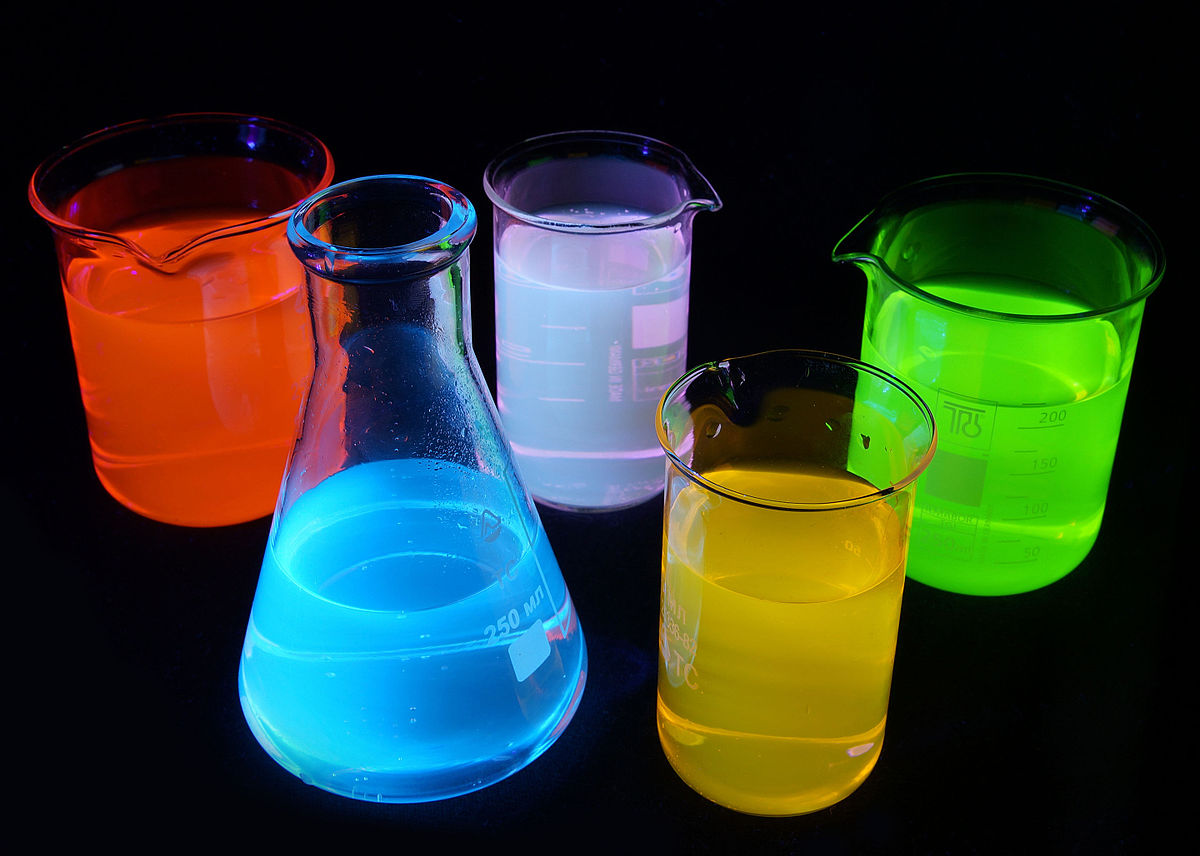
Certain materials can be made to luminesce under specific conditions. For example, some minerals will luminesce when exposed to short-wave ultraviolet light. This phenomenon is called fluorescence. Other minerals will luminesce when exposed to long-wave ultraviolet light or when they are heated. This phenomenon is called phosphorescence.
The word “neon” comes from the Greek word for “new”. Neon was first discovered in 1898 by British chemist Sir William Ramsay. Neon is a colorless, odorless, and tasteless gas. It is found in trace amounts in the Earth’s atmosphere. Neon is used in advertising signs and fluorescent lighting. It is also used in lasers and television tubes. [1]
Neon lights are made of glass tubes that are filled with neon gas. When electricity is applied to the neon gas, it produces a bright light. The color of the light depends on the type of gas used. Neon lights are available in a wide variety of colors, including red, blue, green, and pink.
Neon colors are very popular in art because they are so eye-catching. Neon art often makes use of black light to create glowing effects. Black light is a type of ultraviolet light that is invisible to the human eye. However, certain materials will fluoresce (glow) when exposed to black light. This makes neon colors appear even brighter and more vibrant.
How to make regular paint glow
Paints that glow under a black light are called fluorescent paints. Fluorescent paints contain pigments that absorb ultraviolet light and re-emit it as visible light. The color of the visible light depends on the type of pigment used.
Fluorescent pigments are made from materials such as zinc sulfide or strontium aluminate. These pigments are usually green, yellow, or orange. However, they can also be made in other colors, such as pink, blue, and purple.
To make your own fluorescent paint, start by mixing together equal parts of zinc sulfide and white glue. Then add a small amount of water to the mixture and stir until it is the consistency of regular paint. You can use this paint as is, or you can add food coloring to create different colors.
Once you have mixed your paint, apply it to a piece of white paper or cardboard. Then turn off the lights and view your artwork under a black light. The paint will glow brightly! You can also experiment with other materials, such as highlighter ink, toner from a photocopier, and glow-in-the-dark stars.
Fluorescent paints are not just for black light art. You can also use them in regular paintings. Just mix the fluorescent pigment with regular acrylic paint to create glowing colors. You can even find fluorescent acrylic paints that are already made. These paints are perfect for creating glowing effects in your paintings. [2]
Making Neon Colors With Neon Pigment Powder
To use neon pigment powder, mix it with a clear acrylic paint medium. You can find this medium at any art supply store or online. Once you have mixed the pigment powder and medium together, apply it to your canvas using a brush or sponge.
Keep in mind that neon pigment powder can be expensive. If you want to save money, you can mix your own neon paint by adding fluorescent pigments to regular acrylic paint.
Making Neon Colors With Acrylic Gesso
Acrylic gesso is another great way to create neon colors. Gesso is a white paint that is used to prime canvas before painting. It is also very opaque, which makes it perfect for creating bright and bold colors.
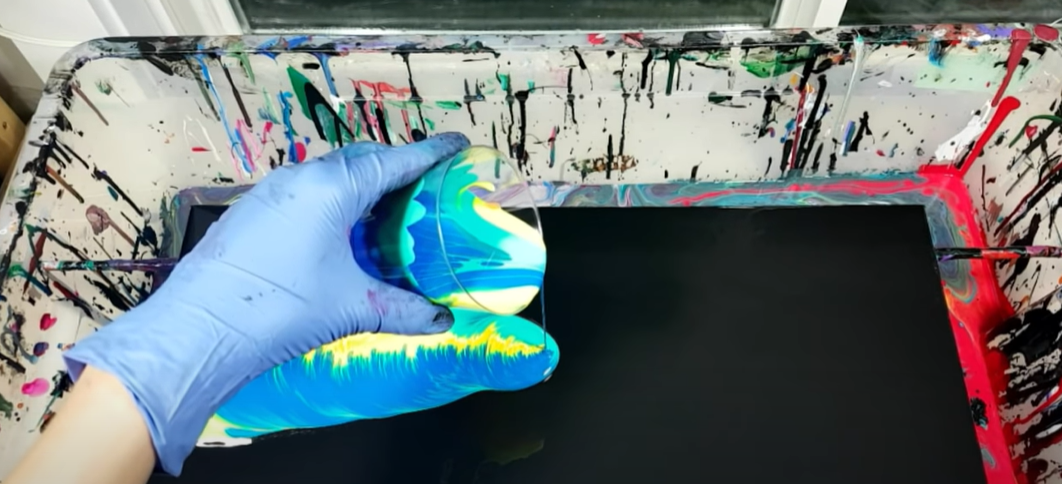
You can mix acrylic gesso with your chosen primary color. To darken the shade, add a small amount of black paint. To lighten the shade, add a small amount of white paint. Keep in mind, the darker colors you add, the duller your neon color will appear.
After you create your custom color, use a brush or other tool to apply it to the canvas. Because acrylic gesso dries quickly, you won’t have much time to work with it once applied to your painting. [3]
How to Keep Neon Acrylic Colors Bright?
Once you have mixed your neon colors, it’s important to keep them bright. The best way to do this is to use a UV protected varnish. Varnish is a clear coating that is applied to paintings. It protects the painting from sunlight and other harmful UV rays.
To apply varnish, mix it with your chosen primary color. Add a small amount of black or white paint to this mixture until you get the desired shade. Remember, the more black or white paint you add, the less vibrant your neon color will be.
Once you have mixed your desired shade, apply it to your painting with a brush or other tool. Varnish dries quickly, so you’ll need to work fast when applying it to your painting.
Applying a UV protected varnish is the best way to keep your neon colors bright. However, you can also try storing your paintings in a dark place. This will help prevent the colors from fading over time.
Best Neon Colors With A Glow-In-The-Dark Effect
If you want to create a truly unique neon look, try using glow-in-the-dark paint. Glow-in-the-dark paint is made from phosphorescent materials. This makes it charge up when exposed to light and then glow in the dark.
To use glow-in-the-dark paint, mix it with a clear acrylic medium. You can find clear acrylic mediums at any art supply store. Once you have mixed the two together, apply it to your canvas with a brush or other tool.
Glow-in-the-dark paint is very concentrated, so you don’t need to use much to get bright and bold colors. However, it can be tricky to work with, so make sure you practice on a scrap piece of paper before you start painting.
PEBEO Phosphorescent Gel
This product is perfect for those who want to add a glow-in-the-dark effect to their paintings. This gel can be used on its own or mixed with other colors to create bright and bold neon looks.
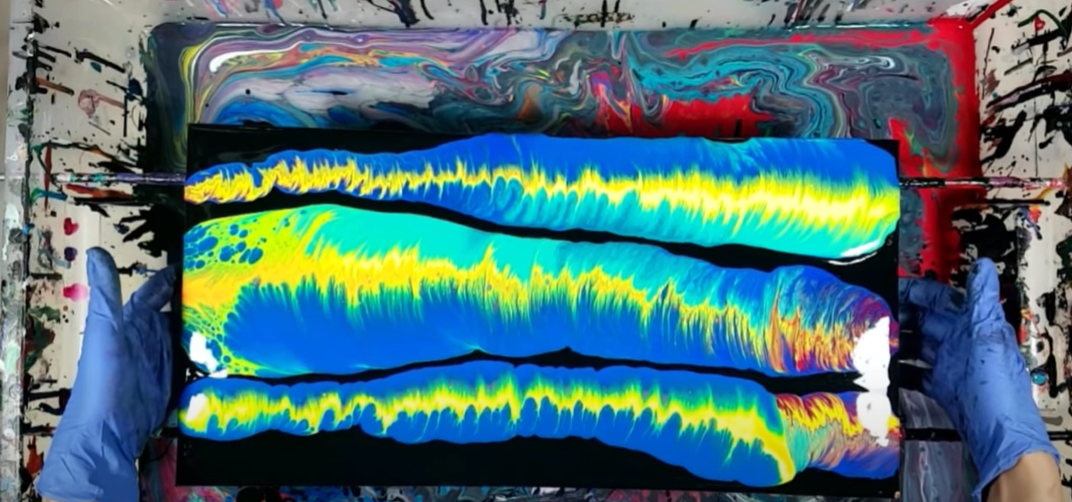
To use this product, simply apply it to the surface you wish to paint and then expose it to light. The gel will absorb the light and then release it over time, creating a glowing effect. [4]
FolkArt Neon Glow Acrylic Paint Set
Neon colors are all the rage these days, and there’s no better way to get that bright, bold look than with FolkArt Neon Glow Acrylic Paint Set. This set includes six vibrant colors that are perfect for creating stand-out artwork.
Here are some tips to help you get started:
- Use a white canvas or primer to really make the colors pop.
- Work in thin layers so the paint doesn’t become too thick or gloopy.
- Use a small brush to get precise lines and shapes.
- Go slowly and build up the color gradually. It’s easier to add more paint than it is to remove it!
- Don’t be afraid to experiment! Neon colors are fun and versatile, so have fun with it.
With these tips, you’ll be painting bright and bold neon masterpieces in no time!
Neon Nights UV Fabric Paint Set
This fabric paint set comes with eight different neon colors, all of which will glow brightly under UV light. The paints can be used on a variety of fabrics, and they’re perfect for creating bold and bright neon designs. With these tips, you’ll be able to create amazing neon looks that are sure to turn heads.
Popular Neon Colors
Neon colors are all the rage these days, and there are a few that are particularly popular. Here are some of the most popular neon colors that you can use to create bright and bold looks:
- Neon green
- Electric orange
- Electric blue
- Neon pink
- Electric purple
- Neon yellow
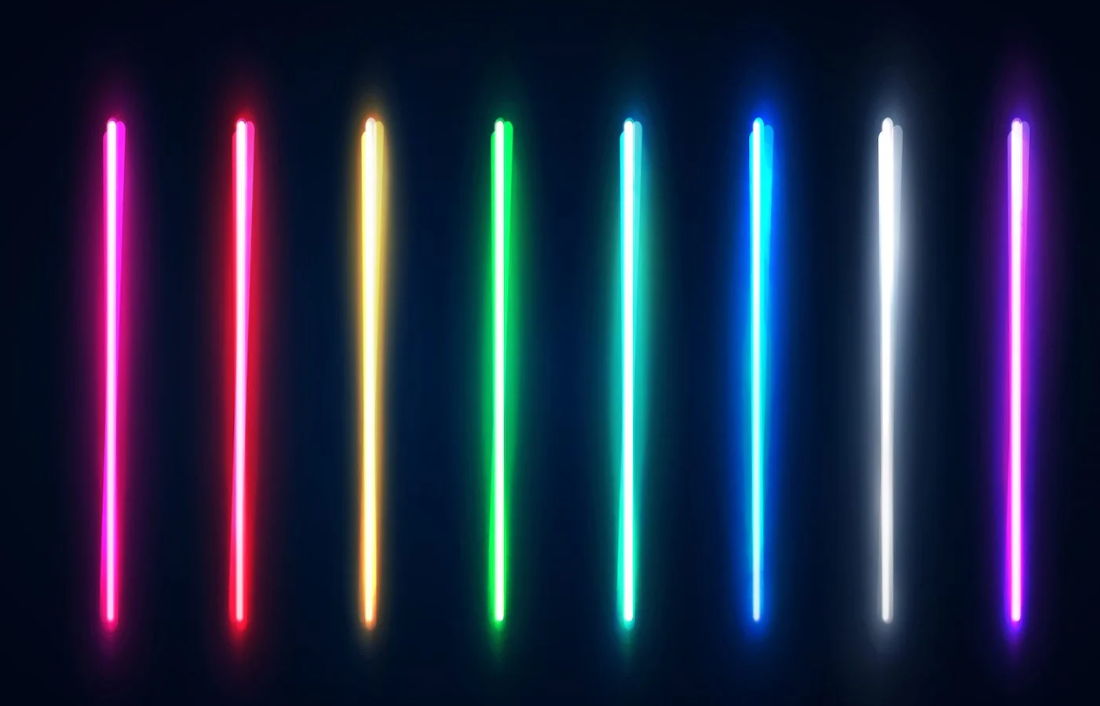
So let’s take a look closer at each one. [5]
Neon Green
Neon green is a bright, vibrant color that is perfect for creating bold and eye-catching designs. This color is often used in neon signs and advertisements, as it is highly visible and attention-grabbing. Neon green is also a popular color for party decorations and clothing, as it is fun and festive.
Electric Orange
Electric orange is an attention-grabbing color that makes bold statements. It’s popular for neon signs and advertisements because it’s very visible. People also love to use electric orange for party decorations and clothing because it creates a festive atmosphere.
Here, if you use cadmium yellow, then all batches are pleasant.
Understanding the principles of mixing colors, we can vary the brightness of the shade: batches with cadmium red will be brighter, with carmine and kraplak – less.
The lemon color itself has a high density, so when using it for blending, you should take this color very carefully.
Electric Blue
It is impossible to get a truly basic color in the process of painting pictures. It is false to assume that blue is obtained by mixing green and yellow, on the contrary, olive comes out. How to get blue? Achieving the goal is simple: just mix blue and white in equal proportions.
In the visual arts, a ready-made palette is often used, where the proportions and ratios of colors are painted. But with it you can get only shades of blue:
Blue
-
- – produced by mixing aquamarine and white paint in a 2:1 ratio.
Royal shade
-
- – obtained by mixing aquamarine and pink.
Dark Blue
-
- – Produced by combining two parts of standard blue and one part of black.
Gray-blue
- – produced by combining the base color and brown. It is brown that will create a darkening effect.
Neon Pink
As it has already become clear, the simplest option that allows you to get pink is a combination of white and red paint. To obtain more saturated shades, the red dye is diluted with water. Then white is added to the diluted red.
Let’s see how to make a pink-purple shade. It may be necessary to draw a lilac. To obtain pink with a purple undertone, cobalt is combined with manganese. You should work as carefully as possible, and connect the substances with drops. If one of the components is in a larger quantity, then it will be very difficult to correct the error.
Pink is obtained by combining raspberry or cherry dye with white. In each of the two cases, the result will be different. Raspberry color will give brighter shades, and cherry will be less saturated. Lilac is easily obtained by combining blue, white and red.
Pink with a hint of peach is obtained by counting drops.Use a white base and add red, brown, and yellow paint in small drip increments. Be very precise with your measurements, it might be helpful to make note of the number of drops used. After adding a drop of the same color to the base, mix it thoroughly and evaluate the result. Be careful when adding brown color.
Electric Purple
We remember that to find purple, you need to mix red and blue, but exactly what shades of red and blue will make a juicy purple? Let’s experiment.
Let’s start with light cadmium red and mix it with bright blue paint.
What happens with such a mixture? Red and green neutralize each other, as do orange and blue. Since the amount of violet pigments in both colors was small, it was practically invisible and the batch came out dirty.
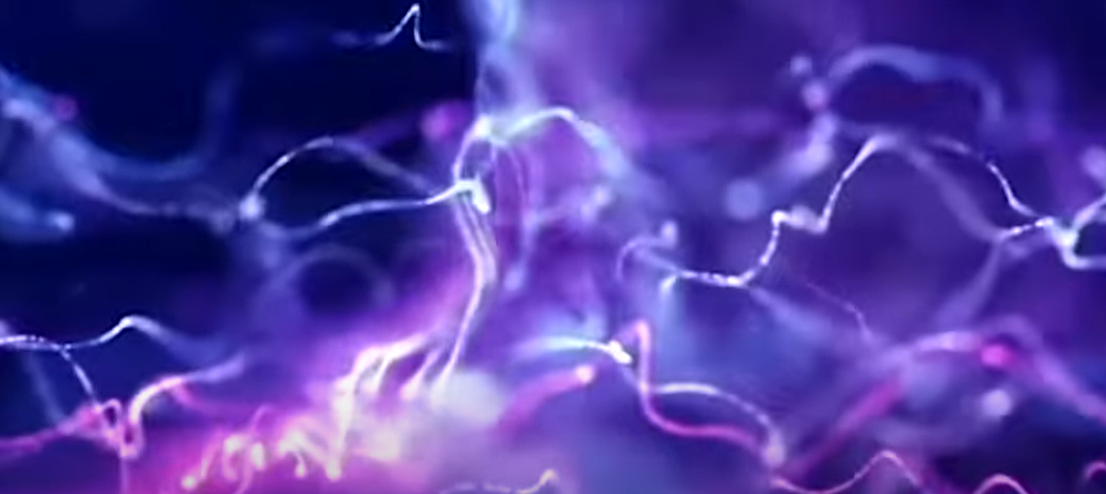
Now let’s take carmine and ultramarine. In addition to the main shade, these colors have a fairly large amount of purple pigment. Here, too, red and green, blue and orange colors muffle each other, but due to the greater amount of purple pigment, the final batch came out brighter.
So, when we want to find a particular shade, it is important for us that it already exists in the original colors.
The combinations of kraplak and blue lacquer can also give good shades of purple due to the large amount of this pigment in blue lacquer. But this shade will no longer be so expressive.
It turns out that when looking for purple shades, you should choose carmine, kraplak (as well as pink, burgundy, quinacridone and quinacridone violet) from reds, lacquer blue, ultramarine (as well as indatren blue) from blue – these colors will give the most expressive purple hues.
Neon Yellow
Manufacturers of large sets of gouache or watercolors call the yellow shades their own, “branded” names – for example, “Inca gold”, “golden palm”. They achieve interesting combinations by combining paints. In production, there are tables, standards with an exact indication of proportions. At home, you will have to select the desired combinations experimentally. Here is a description of the main shades of yellow: golden – widely used in painting icons, used for picture frames, this is a yellow tone with a mother-of-pearl sheen; straw – rich tone with an “apricot” glow; light bronze – yellow with a brown tint; wax – a pale shade of yellowness; lemon – in this tone there is a drop of green.
Before mixing paints in a large volume, it is necessary to conduct a series of trial experiments. To do this, a little yellow and a meager amount of other tones are combined on the palette, they achieve the desired by carefully mixing the material. Usually, 1-3 ml of a different paint is enough for 50 ml of the main color, no more.
Neon Color Combinations
Let’s talk about the combinations of colors that we get when mixing paints.
First, consider what happens when two colors are mixed. In general, when two different tones are combined, a new color is obtained – this is due to the fact that a new set of light waves is generated that our eyes perceive as a new shade.
The brightness of this shade will depend on how much each of the components contributes to the formation of the total light flux. If one tone prevails in the mixture, then it will be more saturated than if both colors were originally of equal intensity. For example, if we take white paint and add just a drop of black paint to it, then visually we will not see practically any difference – the shade will remain white. But if we add a lot of black paint, then the color will gradually change to gray, and then to black.
The second factor that affects the shade obtained when mixing colors is their location on the color wheel. Let’s see what happens if we mix two colors that are close to each other on the color wheel. For example, take yellow and orange – these colors are next to each other, they have a common hue – yellow-orange. When mixed, we get a new tone in which this hue is still present. Such a mixture is called toning down or tinting (from the English tint – “tone”). A similar result can be achieved by adding white paint to one of the colors.
Thus, depending on the location of the Colors being Mixed on the Color Wheel, we obtain two effects: tinting (if the colors are close to each other on the color wheel) or shading (if the colors are far from each other).
Now let’s see what happens when we mix three colors. If we take any two colors and mix them, then we get a new tone. And if we add a third color to this mixture, then again we get a new shade. This time it will be different from the color that would have been obtained by mixing only two of these three colors.
To understand why this happens, let’s imagine that we have mixed two colors and got a new shade. This new shade will also have its own place on the color wheel – it will be located between the two colors that were used to create it. Now, if we add a third color to this mixture, then the resulting shade will also have its own place on the color wheel. And it will be located between the new shade and the third color that we added to the mixture.
Thus, when mixing three colors, we get a new shade that is located between the shades that would have been obtained by mixing only two of these colors. This effect is called toning (from the English tone – “tone”).
For example, let’s see what color we get if we mix yellow, blue and red. To do this, we need to find the middle point between each pair of colors and draw a line connecting these points. The resulting triangle will show what color will be obtained as a result of toning.
As you can see from the figure, the resulting color is located at the junction of all three lines. This color is called primary magenta (from the English primary – “main”, Latin magenta – “red”).
It should be noted that when mixing three colors, we can not only predict the resulting shade, but also its intensity. The fact is that when mixing colors, their light fluxes are added together. Therefore, the more colors are mixed, the brighter the resulting shade will be.
Designing with Neon Colors
Neon colors can add a bright and bold touch to any design. But how can you use them effectively? Here are some tips:
- Use neon colors sparingly. A little goes a long way!
- Pair neon colors with black or white for a high-contrast look.
- Create an ombré effect by gradating different neon colors from light to dark.
- Use neons of different hues for a rainbow effect.
- Try mixing neon colors with metallics for an unexpected twist.
With these tips in mind, go forth and experiment with neon colors in your designs!
FAQ
What colors make up neon?
Neon colors are created by mixing UV-reactive pigments with a clear resin. The most common neon colors are yellow, green, pink, and orange.
What color combination makes neon green?
There are two colors that combine to make neon green; yellow and blue. You can mix these colors together in any ratio to create different shades of neon green.
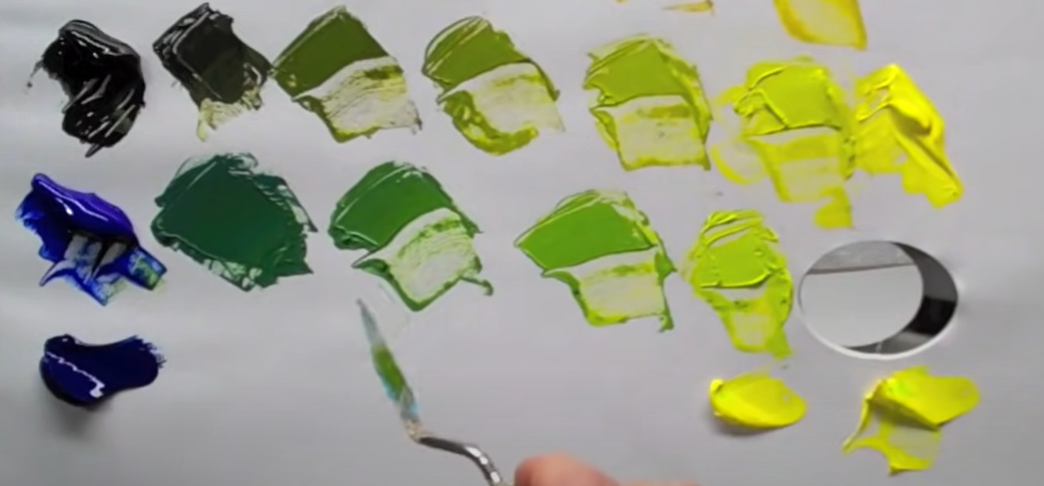
Can you mix acrylic paint with glow in the dark paint?
Yes, you can mix acrylic paint with glow in the dark paint to create bright and bold neon looks. Simply add a few drops of glow in the dark paint to your acrylic paint and mix well. Then apply the paint to your project as usual. The resulting color will be much brighter and more vibrant than if you had used regular acrylic paint alone.
Which paint glows in the dark?
Glow in the dark paint is a type of phosphorescent paint that contains small particles of luminescent material. When exposed to light, these particles absorb energy and then glow in the dark when the lights are turned off. Glow in the dark paint is available in a variety of colors, including green, blue, pink, and orange.
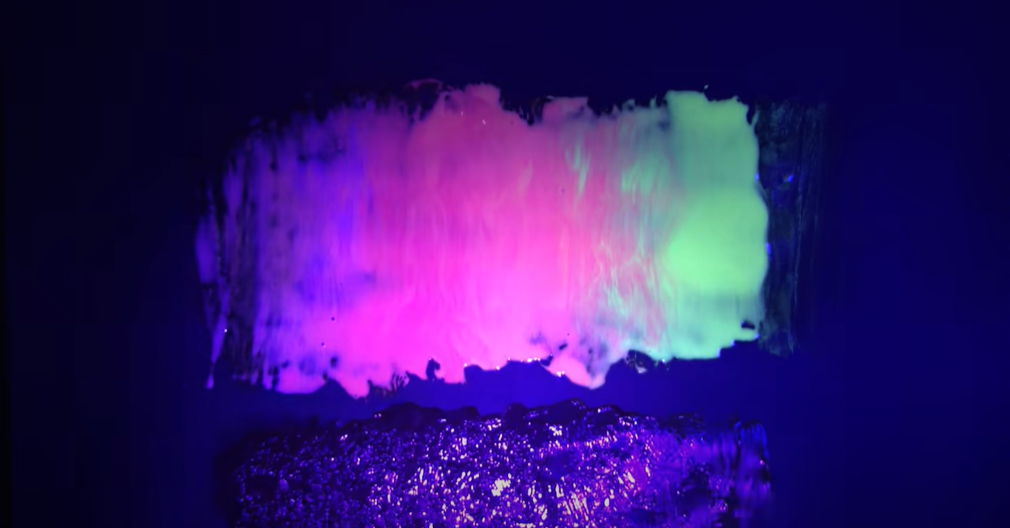
Is glow paint waterproof?
Yes, glow paint is waterproof and can be used outdoors. However, keep in mind that it will take longer for the paint to charge in low-light or shady areas.
Is luminous paint toxic?
No, luminous paint is not toxic. However, it is always a good idea to read the label before using any type of paint, just to be sure.
How do you make glowing resin?
To make glowing resin, you will need to add some glow in the dark powder to your resin mixture. Simply mix the powder into the resin according to the manufacturer’s instructions, then pour it into your mold and let it cure. The finished product will glow in the dark!
Useful Video: Fluorescent Landscape / Easy Acrylic Painting Demo For Beginners / Project 100 Days / Day #73
Conclusion
You can make beautiful neon colors at home with just a few inexpensive materials. Acrylic paint, highlighters, and glow-in-the-dark paints are all great options for creating vibrant neons that will add an extra pop of color to any project. With a little bit of practice, you’ll be able to create neon colors that rival any professional artist’s work. So get out there and start experimenting!
References
- https://www.rsc.org/periodic-table/element/10/neon
- https://www.wikihow.com/Make-Glow-in-the-Dark-Paint
- https://pickypens.com/how-to-make-neon-colors-with-acrylic-paint-glow-in-the-dark/
- https://en.pebeo.com/catalogue/famille/studio-acrylics-auxiliaries/studio-acrylics-100-ml-phosphorescent-gel-yellow–832116
- https://www.shutterstock.com/blog/neon-colors-history-design

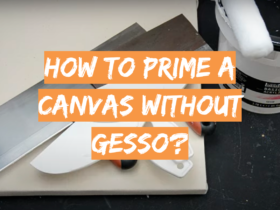



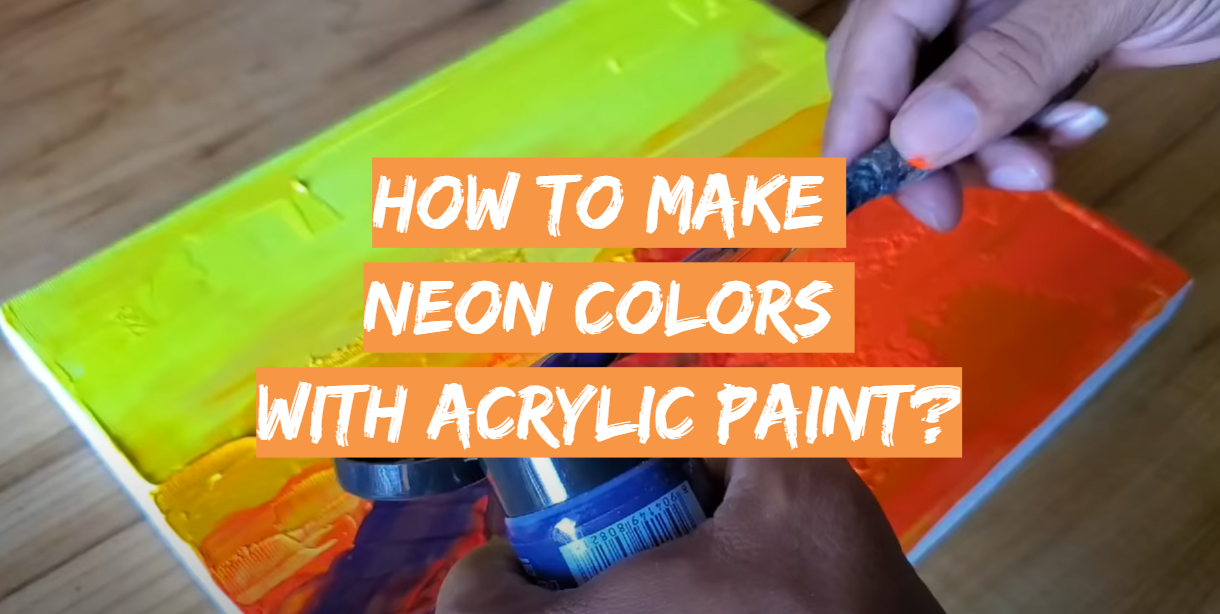


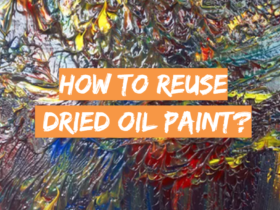
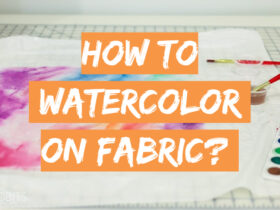
Leave a Review